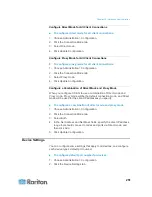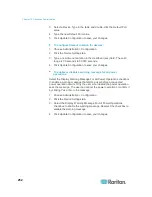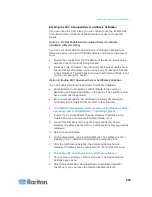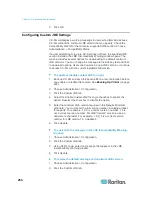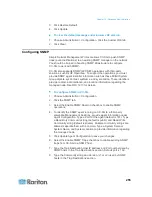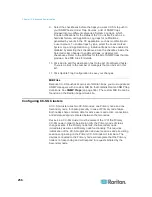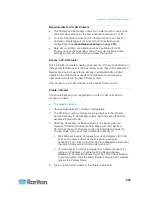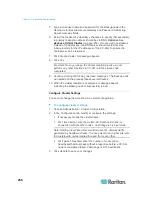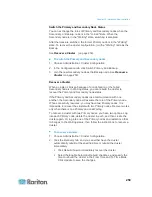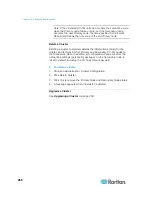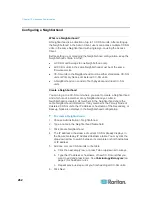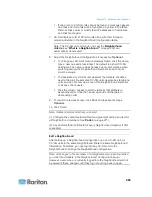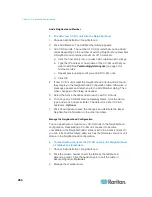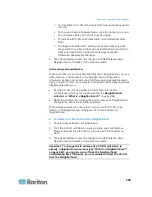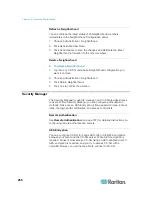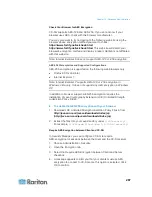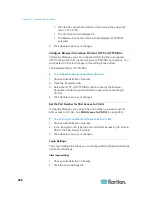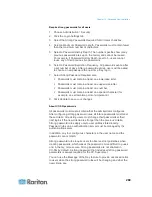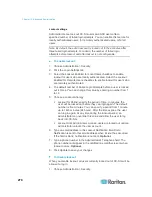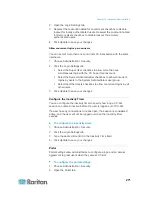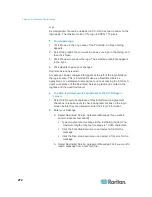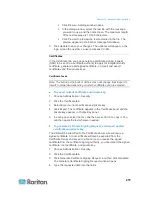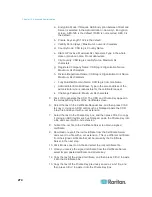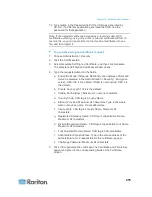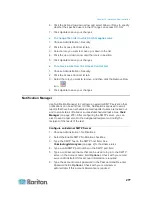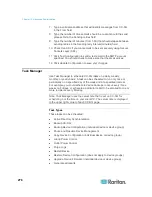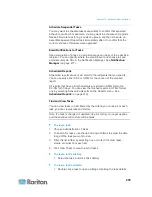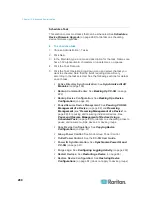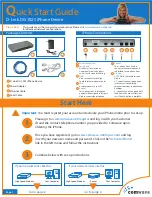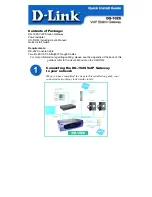
Chapter 15: Advanced Administration
265
To deactivate a CC-SG unit, deselect the Active checkbox next to
the unit.
To change a Secure Gateway Name, click the name, type a new
one and press Enter. The name must be unique.
To retrieve all CC-SG units' latest data, click Refresh Member
Data.
To always terminate users' existing connection sessions when
they switch to another CC-SG unit, select the Disconnect Active
Sessions when Switching Secure Gateways checkbox.
Otherwise, deselect the checkbox.
4. Click Send Update to save the changes and distribute the latest
Neighborhood information to the other members.
Delete a Neighborhood Member
When a CC-SG unit in a Neighborhood becomes inappropriate, you may
either remove or deactivate it in the Neighborhood configuration.
Otherwise, Access Client users may find these units inaccessible when
trying to switch to them. For example, a Neighborhood member becomes
inappropriate when you:
Set the CC-SG unit as a Backup CC-SG node in a cluster
configuration, which is not a state meeting the
Neighborhood
criteria
(see "
What is a Neighborhood?
" on page 262).
Reset the CC-SG unit, causing the unit to remove its Neighborhood
configuration and return to factory defaults.
When deleting members, ensure that a minimum of 2 CC-SG units
remain in the Neighborhood. Otherwise, CC-SG will delete this
Neighborhood.
To delete a CC-SG unit from the Neighborhood
1. Choose Administration > Neighborhood.
2. Click the CC-SG unit that you want to delete, and click Remove
Member. Repeat this step until you remove all CC-SG units you
want.
3. Click Send Update to save the changes and distribute the latest
Neighborhood information to the other members.
Important: To change the IP address of a CC-SG unit which is
already
a Neighborhood member
(see "
What is a Neighborhood?
"
on page 262), you must remove it from the Neighborhood
configuration first. Otherwise, you are unable to delete the CC-SG
from the Neighborhood.

